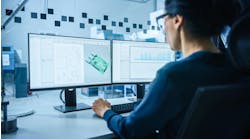The Lighting Research Center (LRC) released a publication entitled, “Lighting Answers: UV Disinfection Products.” This online publication includes information on products that produce optical radiation at specific ultraviolet (UV) wavelengths, designed for use in disinfecting indoor building surfaces and/or air. Three key aspects of UV disinfection are considered throughout the document: product effectiveness, radiation safety, and energy use in buildings.
Organized in a question and answer format, the questions were developed based on the results of a survey sent by the LRC to various lighting stakeholders in June 2020. Important aspects of UV disinfection discussed in the publication include the wavelengths of optical radiation commonly used for disinfection, key characteristics of UV disinfection currently on the market, field measurement and assessment of UV disinfection products, and currently available codes and regulations pertaining to these products.
This publication also provides a concise guide for professionals who are considering the specification of UV disinfection products in buildings, including a discussion on selecting the dose of UV radiation needed to inactivate various types of pathogens, including viruses, bacteria, or fungi. Finally, the publication includes the results of LRC testing of 12 UV disinfection products, representing a variety of product types. This analysis includes a review of manufacturer claims of product performance as well as LRC evaluation of other key attributes of product performance. The report is sponsored by the Lighting Energy Alliance, the McClung Lighting Research Foundation, and the New York State Energy Research and Development Authority (NYSERDA).
This document is available free to the public and can be downloaded the LRC’s website.



